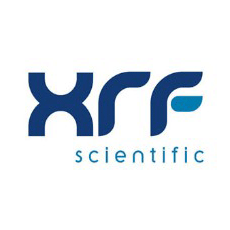A spectrometer is an instrument that is often employed to examine, identify, and precisely gauge electromagnetic radiation emanating from a substance. This aids in identifying the elemental composition of the material.
In X-Ray fluorescence (XRF) spectrometry, high-energy X-Rays are directed at samples to ascertain their composition. This is accomplished by gauging the secondary X-Rays, known as fluorescent X-Rays, generated when they interact with the primary X-Ray source.
What is Spectrometer Calibration?
Despite the many strengths of XRF instruments, like any machine, they necessitate regular maintenance for optimal performance.
Calibration of a spectrometer resets the instrument to its baseline and checks for any defects. Defects can compromise the reliability and accuracy of the data provided by the spectrometer, resulting in incorrect findings.
Why is it Important?
Spectrometer calibration is critical not only for ensuring precise results but also for detecting any flaws in the instrument.
If a spectrometer is damaged, unused, or left unattended for extended periods, it is more likely to drift from its accurate settings. Regular calibration checks are, therefore, essential.
Drifting becomes evident when the spectrometer yields a range of inconsistent results for the same substance. Calibrating the spectrometer can uncover issues and enable the analyst to rectify them.
What are Drift Monitors?
Drift monitors are used to assess the stability of an XRF spectrometer. They can pinpoint even the tiniest of defects and are crucial for maintaining the instrument’s peak performance and reliable outcomes.
XRF Scientific possesses extensive expertise in sample preparation and quality assurance in spectroscopy, and its monitors are developed based on years of experience in crafting products for XRF spectroscopy. However, it is worth noting that its monitors are not Certified Reference Materials (CRM).
XRF Scientific’s Ausmon drift monitors are suitable for supporting the drift correction of XRF instruments across various fields, including:
- Cement
- Nickel
- Silicates
- Iron ore
- Mineral sands
What are Their Benefits?
Calibrating spectrometers with drift monitors offers numerous advantages crucial for achieving accurate test results. These benefits encompass:
- Supporting the long-term stability of the spectrometer
- Being more affordable than conventional spectrometer calibration methods
- Ensuring optimal performance of the spectrometer
- Reducing the risk of ‘drifting’
Regular calibration is essential, as it prevents interference from light sources, temperature fluctuations, and dust particles, which can lead to spectrometer drifting. A well-calibrated spectrometer guarantees efficient and precise operation, streamlining work processes while reducing the chances of errors or interference.

This information has been sourced, reviewed and adapted from materials provided by XRF Scientific.
For more information on this source, please visit XRF Scientific.